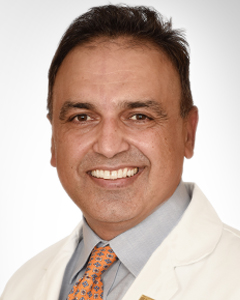Don't let breast cancer sneak up on you! You may be at risk for triple-negative breast cancer
It is safe to say that most women are very aware of their risk of developing breast cancer—we can thank the Susan G. Komen Foundation and their pink ribbons for that one! What some of us may not know, however, is that breast cancer does not take just one form, but actually possesses many different subtypes. Lately, doctors have been alarmed to notice one specific subtype popping up more and more in their patients—in women who didn’t even suspect that they had breast cancer!
Based on their research, doctors now know that there are three types of receptors that commonly fuel the fire where breast cancer is concerned: estrogen receptors, progesterone receptors and human epidermal growth factor receptor 2 (HER 2). Patients whose breast cancer develops from these receptors have the most treatment options available to them—in addition to chemotherapy and radiation, there are hormone treatments they can take to attack the dangerous cells and help prevent their recurrence.
Triple-negative breast cancer (TNBC) appears in patients who have tested negative for all three of these receptors. Because of its cellular pattern, this subtype best responds to chemotherapy. TNBC does not respond to hormone therapy, and as a result it tends to progress quickly with a higher rate of recurrence. While it can affect any race and age group, it is, for unknown reasons, most common amongst premenopausal women of African-American, Latina or Caribbean descent. Women of all races who have tested positive for the BRCA gene mutation are also at higher risk for developing this type of breast cancer.
What is perhaps most distressing, is that many women arrive at the hospital complaining of symptoms they consider unrelated to breast cancer—only to find out that they are suffering from an aggressive form of the disease. Dr. Asad Ali Sheikh, Medical Director of the UF Health Cancer Center at Orlando Health, has diagnosed many patients who find themselves in this dilemma. “I see a lot of young, premenopausal women who come in complaining of chest pains and shortness of breath and are shocked to learn that they are presenting symptoms of TNBC.”
It doesn’t end at the diagnosis—hearing the prognosis can be just as hard. For reasons we’re not yet sure of, women under 40 who are diagnosed with triple negative breast cancer tend to need more aggressive systemic chemotherapy than their post-menopausal counterparts. They also have a lower rate of survivorship and tend to remain disease-free for an average of only three to four years. Women diagnosed after the age of 60, on the other hand, are inclined to require less aggressive treatment and stand a good chance of being and staying breast cancer free for an average of six to eight years. Doctors don’t know why, but age seems to be the deciding factor here—no matter tumor size, family history and lymph node involvement, TNBC in younger women tends to be more aggressive.
As with all types of cancer, the best offense is a good defense. Dr. Sheikh encourages women to be proactive about mammograms and self-exams, and to undergo testing for the BRCA gene (especially if breast cancer runs in your family). You may not be able to prevent it—but staying on top of your health can help you to catch the disease early and stop it in its tracks.







